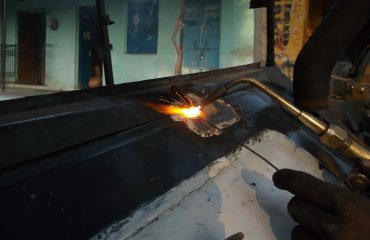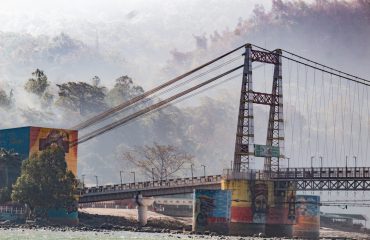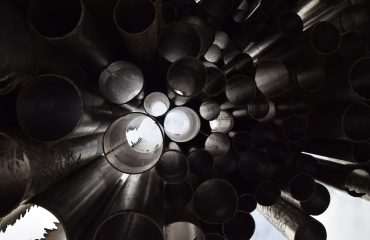body {
font-family: sans-serif;
line-height: 1.6;
}
h1, h2, h3 {
color: #333;
}
h1 {
font-size: 2.5em;
}
h2 {
font-size: 2em;
}
h3 {
font-size: 1.5em;
}
The petroleum industry relies heavily on extensive pipeline networks for the efficient and safe transportation of crude oil, natural gas, and refined products. The integrity of these networks is paramount, and this hinges critically on the precise specifications of the pipes used. This post delves into the intricate world of petroleum pipeline specifications, exploring the key factors that determine pipe selection and ensure operational safety and longevity.
Material Selection: The Foundation of Pipeline Strength
The choice of pipe material is a crucial initial step, dictated by factors like the transported fluid (crude oil, refined products, natural gas), operating pressure and temperature, environmental conditions (soil corrosivity, temperature fluctuations), and the pipeline’s lifespan. Common materials include:
- Carbon Steel: The most widely used material due to its strength, weldability, and relatively low cost. Different grades (e.g., API 5L X42, X52, X65, X70, X80) offer varying yield strengths, catering to different pressure requirements.
- Alloy Steel: Used in high-pressure applications or where enhanced corrosion resistance is needed, particularly in sour gas environments (containing hydrogen sulfide). These alloys often contain chromium, molybdenum, and nickel.
- Stainless Steel: Offers excellent corrosion resistance, making it suitable for transporting corrosive fluids or in aggressive environments. However, it’s more expensive than carbon steel.
- High-Density Polyethylene (HDPE): Used increasingly for smaller diameter pipelines, especially for low-pressure applications and in situations where corrosion is a major concern. HDPE offers excellent flexibility and resistance to chemicals.
Material selection involves careful consideration of the material’s mechanical properties, corrosion resistance, and weldability to ensure the pipeline meets stringent safety standards.
Pressure Ratings and Wall Thickness: Ensuring Operational Safety
Pipeline pressure ratings, often denoted by the designation (e.g., X42, X65), indicate the minimum yield strength of the pipe material. This directly influences the maximum allowable operating pressure (MAOP) for the pipeline. Higher pressure ratings require thicker pipe walls to withstand the increased internal pressure. The wall thickness is calculated based on the MAOP, pipe diameter, material properties, and design factors to ensure a sufficient safety margin.
Accurate pressure rating and wall thickness calculations are crucial for preventing failures due to over-pressurization. Industry standards and design codes (e.g., ASME B31.4, B31.8) provide detailed guidelines for these calculations.
Pipe Dimensions and Tolerances: Precision in Construction
Pipe dimensions, including outside diameter (OD), wall thickness (WT), and length, are precisely specified to ensure compatibility with fittings, valves, and other pipeline components. Tolerances are also defined to account for manufacturing variations. Strict adherence to dimensional specifications is essential for achieving a leak-free and structurally sound pipeline system.
Standardized pipe dimensions, based on industry norms (e.g., API standards), simplify the procurement and installation process. Deviations from these standards can lead to compatibility issues and potentially compromise the integrity of the pipeline.
Industry Standards and Codes: Guiding Principles for Pipeline Integrity
Numerous industry standards and codes govern the design, construction, operation, and maintenance of petroleum pipelines. These standards ensure consistency, safety, and reliability across the industry. Key standards include:
- API 5L: Specifies the requirements for line pipe.
- ASME B31.4: Covers the design and construction of liquid petroleum transportation systems.
- ASME B31.8: Addresses the design and construction of gas transmission and distribution piping systems.
- ISO standards: Provide international guidelines for various aspects of pipeline engineering.
Compliance with these standards is mandatory for ensuring the safety and longevity of petroleum pipelines. Regular inspections and testing are conducted to verify adherence to these standards.
Testing and Inspection: Verifying Pipeline Quality
Rigorous testing and inspection procedures are implemented throughout the pipeline lifecycle, from material procurement to final commissioning. These procedures ensure that the pipes meet the specified requirements and are free from defects. Common tests include:
- Hydrostatic testing: The pipe is filled with water under pressure to verify its ability to withstand the design pressure.
- Non-destructive testing (NDT): Techniques like radiographic testing (RT), ultrasonic testing (UT), and magnetic particle testing (MT) are used to detect internal and external flaws.
- Chemical analysis: Ensures that the pipe material meets the specified chemical composition.
- Mechanical testing: Verifies the pipe’s tensile strength, yield strength, and other mechanical properties.
Thorough testing and inspection are essential for preventing pipeline failures and ensuring the safe and reliable transportation of petroleum products.
Understanding the intricacies of petroleum pipe specifications is crucial for ensuring the safety and efficiency of the petroleum industry. Careful material selection, precise dimensional control, adherence to industry standards, and rigorous testing are all essential components in the creation of robust and reliable pipeline networks.
SEO-Friendly Tags:
- Petroleum Pipeline Specifications
- API 5L Line Pipe
- Pipeline Pressure Ratings
- Pipeline Material Selection
- Pipeline Integrity Management




